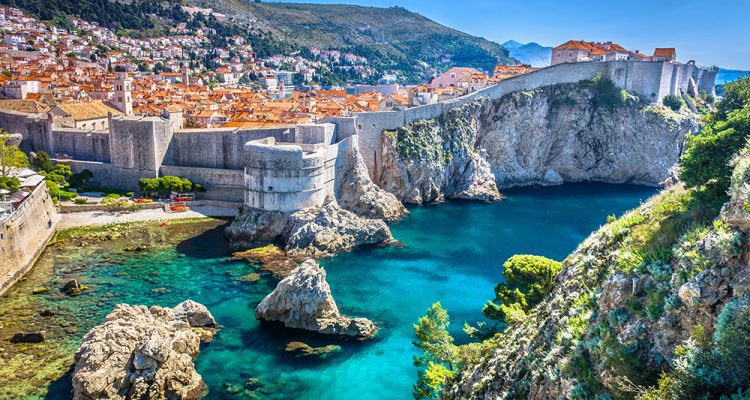Croatia, a stunning gem nestled along the Adriatic Sea, is a land where ancient history meets breathtaking natural beauty. From its sun-drenched coastlines and medieval towns to lush national parks and vibrant culture, Croatia offers a rich tapestry of experiences for every traveler. Join us as we embark on a journey to discover the enchanting charm of this captivating country.
The Adriatic Coast: A Riviera of Dreams
The Croatian coastline stretches over 1,100 miles, adorned with more than a thousand islands, each with its unique allure. The Adriatic Sea, with its crystal-clear waters, serves as the perfect backdrop for a seaside escape.
Dubrovnik: Known as the “Pearl of the Adriatic,” Dubrovnik is a city that exudes history and elegance. Encircled by massive stone walls, this UNESCO World Heritage site boasts well-preserved medieval architecture, cobblestone streets, and stunning views from its ramparts. Wander through the ancient streets, visit the iconic Dubrovnik Cathedral, and take a cable car ride to Mount Srđ for panoramic vistas of the city and sea.
Split: Split, the second-largest city in Croatia, seamlessly blends ancient and modern. At its heart lies the Diocletian’s Palace, a sprawling Roman complex that forms the city’s historic core. Stroll along the Riva promenade, explore the bustling markets, and indulge in fresh seafood at local taverns. Don’t miss a visit to the nearby islands of Hvar and Brač, known for their picturesque beaches and vibrant nightlife.
Zadar: Zadar, a city with a rich history dating back to Roman times, offers a unique blend of ancient and contemporary attractions. The Sea Organ, an architectural sound art object, produces music through the movement of the sea, while the Sun Salutation captures solar energy to create a mesmerizing light display. Wander through the Roman Forum, visit the Church of St. Donatus, and savor the sunset from the waterfront.
Inland Wonders: Nature’s Masterpieces
Beyond the coastline, Croatia’s interior is a treasure trove of natural wonders, from lush forests and cascading waterfalls to serene lakes and rugged mountains.
Plitvice Lakes National Park: A UNESCO World Heritage site, Plitvice Lakes National Park is a paradise of interconnected lakes, waterfalls, and lush greenery. Wooden walkways meander through this enchanting landscape, offering visitors close-up views of the turquoise waters and vibrant flora. The park is a haven for hikers, photographers, and nature enthusiasts.
Krka National Park: Similar to Plitvice but less crowded, Krka National Park features stunning waterfalls, including the famous Skradinski Buk. Visitors can swim in some of the park’s pools, explore historic monasteries, and take boat tours along the Krka River.
Istria: The heart-shaped peninsula of Istria is renowned for its rolling hills, vineyards, and charming hilltop towns. Rovinj, with its colorful facades and narrow alleys, is a highlight, while Motovun offers breathtaking views and truffle hunting experiences. The region is also known for its excellent wines and olive oils.
Cultural Riches and Culinary Delights
Croatia’s rich cultural heritage is reflected in its diverse architecture, art, and traditions. The country’s cuisine, influenced by its Mediterranean, Central European, and Balkan neighbors, is a culinary journey in itself.
Historical Sites: Croatia is dotted with historical sites, from Roman amphitheaters and Byzantine mosaics to medieval castles and Baroque churches. The city of Pula boasts one of the best-preserved Roman amphitheaters, while the Euphrasian Basilica in Poreč is a masterpiece of early Christian art.
Cuisine: Croatian cuisine is a delightful blend of flavors. Along the coast, fresh seafood, grilled fish, and octopus salad are staples. Inland, hearty dishes like peka (meat and vegetables cooked under a bell) and štrukli (cheese-filled pastry) are popular. Don’t miss trying local specialties like Istrian truffles, Dalmatian prosciutto, and Pag cheese.
Festivals: Croatia’s vibrant cultural scene comes alive during its many festivals. The Dubrovnik Summer Festival, Split’s Ultra Europe music festival, and the Zagreb Film Festival are just a few events that showcase the country’s artistic and cultural diversity.
Practical Tips for Travelers
- Best Time to Visit: The ideal time to visit Croatia is during the shoulder seasons of May-June and September-October when the weather is pleasant, and the crowds are thinner.
- Getting Around: Croatia has a well-developed network of buses, ferries, and trains. Renting a car is also a convenient option, especially for exploring inland regions.
- Currency: The official currency is the Croatian Kuna (HRK). Credit cards are widely accepted, but it’s a good idea to carry some cash for smaller establishments.
- Language: Croatian is the official language, but English is widely spoken in tourist areas.
Conclusion
Croatia is a country that captivates the heart and soul of every traveler. Whether you’re exploring ancient cities, basking on sun-kissed beaches, hiking through pristine national parks, or indulging in culinary delights, Croatia promises an unforgettable adventure. So pack your bags, set your compass to the Adriatic, and discover the timeless beauty of Croatia.
Airtkt agencies often have access to exclusive deals and discounts that you might not find on your own.
















